Key Highlights
- Biological Architecture: Digital nervous systems mirror human biology – IoT sensors act as nerves, control systems function as brains, and actuators serve as muscles, creating intelligent urban infrastructure
- India’s Smart Infrastructure: All 100 Smart Cities now have operational ICCCs managing real-time city operations with 84,000+ CCTV cameras, 17,026+ km SCADA-monitored water systems, and 94% project completion
- Traffic Transformation: Malaysian digital twin systems achieved 37.7% reduced travel time, 38.5% less congestion, 27.3% fuel savings, and 18.4% CO2 reduction with 98.3% uptime
- Predictive Power: AI-driven infrastructure monitoring enables 96.7% accuracy in vehicle health prediction and moves cities from reactive firefighting to proactive strategic management
- Economic Impact: Smart infrastructure investments of $32.8 billion across India’s Smart Cities drive GDP growth while cutting energy usage by 30-50% through IoT-enabled optimization
Understanding the Digital Nervous System: Where Biology Meets Technology
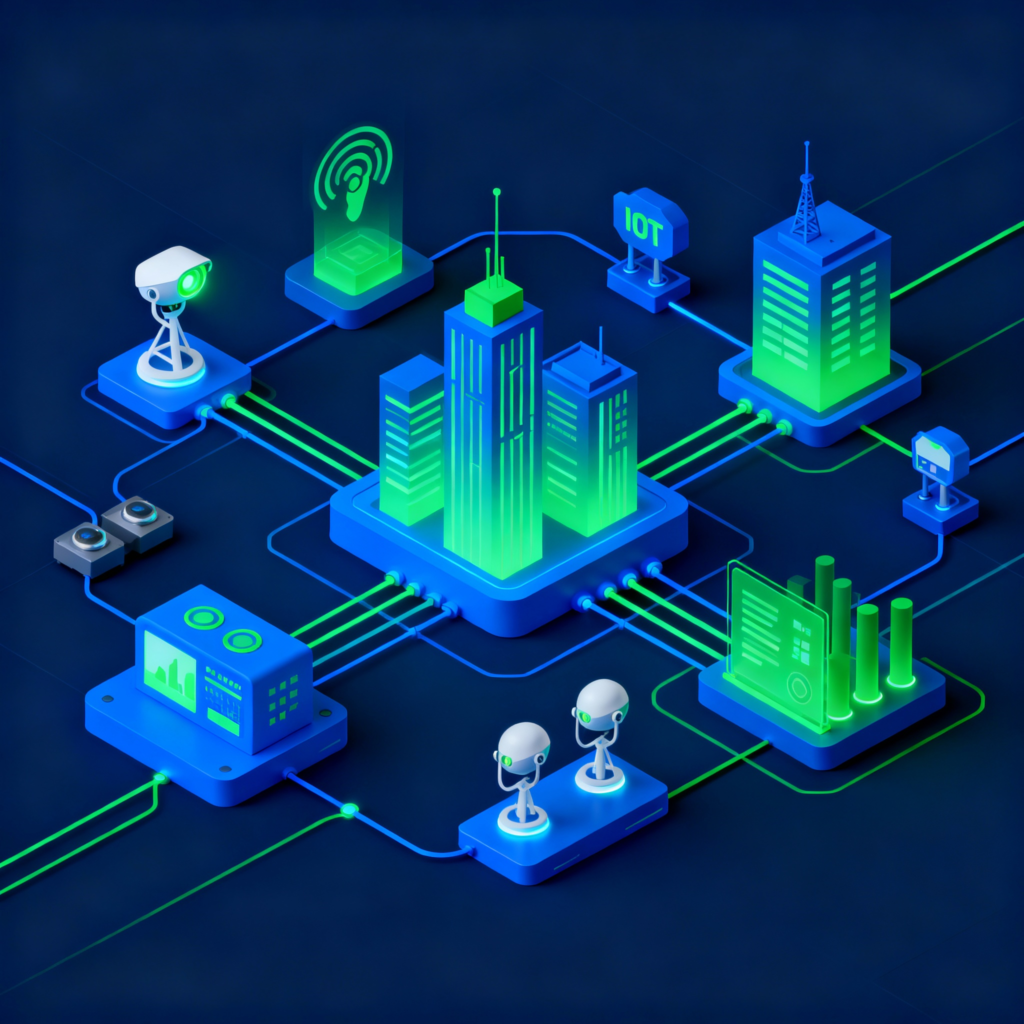
The concept of a “digital nervous system” represents one of the most elegant parallels between biological organisms and modern infrastructure. Just as your hand instantly pulls away from a hot surface through sensory nerves, spinal cord processing, and muscle response, smart cities now operate with similar reflexive intelligence.
This biological analogy provides the perfect framework for understanding how modern infrastructure operates:
Sensors – The Nerves: IoT devices continuously detect environmental changes – temperature fluctuations, traffic congestion, water pressure variations, air quality degradation – and transmit this data to control systems. Like nerve endings throughout your body, these sensors form the perception layer of smart cities.
Control Systems – The Brain: On-premises or cloud-based processing units analyze sensor data using machine learning algorithms, making split-second decisions about appropriate responses. India’s Integrated Command and Control Centers (ICCCs) exemplify this intelligence layer, functioning as the municipal brain coordinating citywide operations.
Actuators – The Muscles: Based on control system decisions, actuators execute programmed actions – adjusting traffic signals, modulating HVAC systems, opening water valves, deploying emergency services. These devices translate digital decisions into physical actions that shape urban environments.
Communication Pathways – The Nervous System: Wi-Fi, NB-IoT, GSM, 5G, and even body-coupled communication for healthcare applications enable data flow between components. Like neural pathways transmitting electrical signals, these networks ensure seamless information exchange across the urban ecosystem.
India’s Smart Cities Mission: Nation-Scale Digital Nervous System

India’s ambitious Smart Cities Mission demonstrates the digital nervous system concept at unprecedented scale. As of May 2025, the mission has achieved remarkable milestones that position India as a global leader in smart urban infrastructure.
Infrastructure Achievements
Command and Control Excellence: All 100 Smart Cities now operate fully functional ICCCs that served dual purposes – routine city management and COVID-19 war rooms during the pandemic. These centers integrate emerging technologies including AI, IoT, and data analytics to optimize transport, water supply, and waste management operations.
Public Safety Infrastructure: Over 84,000 CCTV surveillance cameras monitor public spaces across smart cities, supported by 1,884 emergency call boxes, 3,000 public address systems, and automated traffic enforcement systems for red-light violations and number plate recognition.
Water Management: 28 cities developed drinking water treatment capacity exceeding 2,900 million liters per day (MLD), with more than 17,026 km of water supply systems monitored through SCADA technology, significantly reducing non-revenue water losses and leakages. pib.gov
Project Completion: As of 2025, 94% of the total 8,067 planned projects have been successfully completed, reflecting substantial progress in urban infrastructure transformation across India. The mission released 99.44% of its total budgeted outlay to participating cities. 99realty
Investment and Scale
The financial commitment demonstrates India’s serious intent: Total planned investments reach $32.8 billion across 100 cities, with the Smart Cities Mission contributing $7.6 billion over eight years. This massive investment creates the foundation for nationwide digital nervous system deployment.
However, resource allocation reveals priorities and gaps: While urban mobility and economic development received substantial funding, investments in solid waste management, social sectors, and environmental initiatives remain lower at approximately $0.8 billion. This imbalance requires addressing for comprehensive smart city development.
Digital Twins: Creating Virtual Command Centers

Digital twin technology represents one of the most transformative applications of the digital nervous system concept. By creating precise virtual replicas of physical infrastructure, cities gain unprecedented capabilities for monitoring, simulation, and optimization.
Architecture and Integration
Digital twins integrate multiple data streams: Geometric models, geospatial information, real-time performance metrics, asset attributes, and management data combine to create comprehensive cyber-physical ecosystems. This integration enables intelligent decision-making based on holistic understanding rather than siloed data.
The technology stack includes: Cloud computing for scalability and advanced analytics, IoT sensors for real-time data collection, 5G networks for high-speed low-latency connectivity, and AI algorithms for predictive modeling and optimization.
Transformative Applications
Intelligent Traffic Management: Malaysian implementations of IoT and digital twin-enabled traffic systems achieved extraordinary results – 37.7% reduction in travel time, 38.5% reduction in congestion, 27.3% lower fuel consumption, and 18.4% CO2 emission reduction. System uptime reached 98.3%, with signal conditioning frequency increasing by 280.5%. thesai
Road Infrastructure Safety: Real-time monitoring of road conditions and structural integrity enables predictive maintenance that prevents catastrophic failures. Sensors capture data continuously, sharing information via 5G and Wi-Fi to cloud servers where AI algorithms identify potential issues before they escalate.
Bridge and Civil Infrastructure: Digital twins enable intelligent maintenance systems for critical infrastructure, using MEMS (Micro-Electro-Mechanical Systems) sensors and AI for structural health monitoring. Cost-effective indirect monitoring through vehicle-mounted sensors reduces maintenance costs from the traditional 0.4-2% of construction cost annually.
Internet of Vehicles (IoV): Integrating IoT, cloud computing, digital twins, and machine learning enables real-time vehicle health prediction with 96.7% accuracy, fraud detection in insurance claims with 98% accuracy, and repair cost prediction with minimal error (Mean Square Error: 0.003). This enhances lifecycle management, safety, and energy efficiency while reducing costs.
AI-Driven Infrastructure: From Reactive to Predictive Management

Artificial intelligence transforms infrastructure management by enabling cities to anticipate problems rather than merely responding to failures. This shift from reactive firefighting to proactive strategic management represents a fundamental paradigm change in urban operations.
Real-Time Anomaly Detection
AI algorithms continuously analyze infrastructure performance, automatically identifying deviations from benchmark patterns. When anomalies occur, the system triggers alerts enabling investigation and resolution before issues escalate into service disruptions or safety hazards.
Advanced detection models including Isolation Forest, recurrent neural networks, and variational autoencoders prove highly effective in urban contexts. These approaches detect unusual patterns in traffic flow, energy consumption, water distribution, and other critical systems with remarkable accuracy.
Predictive Analytics Capabilities
Historical data analysis enables accurate prediction of future failures and capacity needs:
Storage Capacity Planning: Predicting when systems approach capacity limits prevents service interruptions and enables proactive expansion.
Hardware Failure Prediction: Identifying components likely to fail enables scheduled maintenance during off-peak periods rather than emergency repairs during crises.
Demand Forecasting: Anticipating peak usage periods allows optimal resource allocation and cost management.
Operational Benefits
The advantages of AI-driven infrastructure management compound across multiple dimensions:
Clarity and Speed: Automated monitoring and decision-making accelerate response times from hours to seconds.
Autonomy: Systems handle routine operations independently, freeing IT teams for strategic priorities rather than constant firefighting.
Minimized Downtime: Proactive issue resolution prevents service interruptions that disrupt citizen life and economic activity.
Continuous Improvement: Machine learning models refine predictions over time, becoming increasingly accurate as they process more data.
IoT Revolution: The Foundation of Always-On Infrastructure
The Internet of Things forms the sensing and actuation layer that makes digital nervous systems possible. India’s smart city deployments demonstrate IoT’s transformative potential across diverse urban applications.
IoT Architecture for Smart Cities
Smart city IoT architecture typically comprises four or five interconnected layers:
Sensing/Device Layer: IoT sensors, actuators, wearables, and smart devices collect environmental data including temperature, humidity, traffic flow, occupancy, lighting requirements, and much more.
Network/Transport Layer: Connectivity protocols including WiFi, cellular LTE, NB-IoT, LoRaWAN, and LPWAN transmit data from devices to gateways or edge computing systems.
Middleware/Data Processing Layer: Edge compute devices process data near the source for real-time insights, while cloud systems aggregate information from multiple sensors for comprehensive analysis.
Application/Service Layer: Use-case-specific applications perform in-depth analysis, apply business logic, and trigger appropriate actions through user-friendly dashboards and visualization interfaces.
Business Logic Layer: This top-level management layer aggregates insights from multiple applications to trigger cross-application actions based on holistic understanding.
Critical IoT Components
Essential elements of smart city IoT platforms include:
Sensors and Actuators: Collecting data and enabling responsive actions across urban infrastructure.
Gateways: Aggregating data from multiple sensors and enabling secure transmission to central systems.
Data Lakes and Warehouses: Storing raw unstructured data and processed structured information respectively.
Cloud Compute: Performing data manipulation, insight extraction, and advanced analytics at scale.
Sectoral Applications: Deep Dive into Smart Infrastructure
Power Grid Intelligence
Connected power distribution networks leverage real-time monitoring for load balancing, outage detection, and integration of renewable energy sources through smart grids. IoT sensors throughout the grid provide granular visibility into electricity flow, enabling optimization that reduces waste and enhances reliability.
Water Infrastructure Management
Quality and quantity sensors deployed throughout distribution networks enable leak detection, pressure management, and automated treatment plant operations. India’s smart cities monitor over 17,026 km of water supply systems through SCADA technology, significantly reducing non-revenue water losses.
Transportation Systems Optimization
Intelligent traffic light systems optimize flow based on real-time conditions, while public transport tracking and scheduling enhance citizen convenience. Connected vehicle ecosystems enable emergency services routing that saves lives by reducing response times during critical incidents.
Healthcare Digital Nervous Systems
Body Area Networks (BANs) with wearable sensors and actuators create personalized IoT healthcare systems. Wireless health status monitoring coupled with automated treatment delivery enables proactive health management. Secure data transmission using the human body as a communication pathway (125 kHz capacitive coupling) protects patient privacy while enabling cloud-based deep learning for treatment optimization.
Security and Governance Challenges: The Critical Perspective
Cybersecurity Imperatives
Ultra-dense IoT networks require sophisticated intrusion detection systems leveraging ensemble learning approaches including Decision Trees, Naïve Bayes, K-Nearest Neighbors, and Linear Discriminant Analysis. Protecting critical infrastructure from malicious attacks demands encrypted and authenticated communication protocols throughout the system.
Research reveals alarming vulnerabilities: Smart city implementations show serious gaps in cybersecurity preparedness. The interconnected nature of digital nervous systems means a breach in one component potentially compromises entire urban operations.
Data Privacy and Policy
Balancing data collection for enhanced services with citizen privacy rights represents a fundamental governance challenge. Secure data transmission and storage mechanisms must comply with evolving data protection regulations while enabling the real-time analytics that power smart city benefits.
Real-time policy enforcement through AI-driven systems helps safeguard data and ensure compliance. Machine learning and behavioral analytics enable continuous monitoring that detects and prevents policy violations before they cause harm.
Interoperability and Standardization
Gaps across cloud platforms and service platforms hinder coordinated system interaction. Standards enabling different technologies and stakeholders to work seamlessly together remain indispensable for realizing the full potential of digital nervous systems.
Policy frameworks lag technological capabilities: Incomplete regulatory frameworks for IoT and AI deployment create uncertainty that slows innovation while potentially allowing harmful applications. Comprehensive policies must balance encouraging innovation with protecting public interests.
Smart Governance: Command and Control Architecture
India’s ICCC model demonstrates both the promise and challenges of smart governance through digital nervous systems.
Operational Excellence
Centralized monitoring of distributed infrastructure enables coordinated responses to incidents and emergencies. Efficiency gains from integrated operations justify the substantial investments required for ICCC deployment.
Environmental surveillance capabilities vary significantly across cities: 36% monitor air and noise quality, 64% manage solid waste, 13% track water quality, 5% oversee green infrastructure, and 6% handle climate change and disaster management. This variation reveals both the potential and the implementation gaps that require addressing.
Maturity Assessment
Research evaluating ICCC maturity across Indian cities reveals concerning gaps between infrastructure deployment and effective utilization. Despite efficient data acquisition and integration, deficiencies in decision-making and prompt action lead to underutilization of expensive infrastructure investments.
Cities like Pune achieve 52.38% maturity scores, while Ahmedabad reaches 37.5%. These moderate levels indicate that technical infrastructure alone doesn’t guarantee operational excellence – capacity building, process optimization, and organizational change management remain critical.
Implementation Roadmap for India: Policy Framework
Short-Term Priorities (1-3 Years)
Deploy IoT sensors across critical infrastructure in cities beyond the initial 100 Smart Cities.
Establish ICCCs in remaining non-smart cities to extend command and control capabilities nationwide.
Standardize data exchange protocols and platforms enabling interoperability across different vendors and systems.
Pilot digital twin implementations in select cities to validate approaches before scaling nationally.
Medium-Term Goals (3-7 Years)
Scale AI-driven infrastructure monitoring nationally, moving from pilot projects to systematic deployment.
Integrate sectoral digital nervous systems across power, water, transport, and other domains for holistic city management.
Build indigenous IoT device manufacturing ecosystems reducing dependence on imports while creating employment.
Develop comprehensive cybersecurity frameworks protecting critical infrastructure from evolving threats.
Long-Term Vision (7-10 Years)
Fully autonomous infrastructure management in major cities, with systems handling routine operations independently.
Nation-wide digital nervous system connecting all critical infrastructure for coordinated national-level optimization.
Global leadership in smart city technologies, positioning India as an exporter of solutions to other developing nations.
Economic and Development Implications
GDP Growth Drivers
Infrastructure efficiency gains boost productivity across all economic sectors. New industries and job creation in IoT, AI, and smart infrastructure sectors provide employment while enhancing India’s technological capabilities and global competitiveness.
Quality of Life Improvements
Reliable 24×7 services – water, power, connectivity – transform daily life for urban residents. Reduced congestion and pollution enhance health outcomes, while improved safety and emergency response capabilities save lives.
Environmental Sustainability
Energy optimization through intelligent management reduces carbon footprints significantly – smart buildings cut energy usage by 30-50%. Resource conservation through predictive maintenance and optimized allocation supports climate adaptation and resilience goals.
Conclusion: Building Intelligence Without Limits
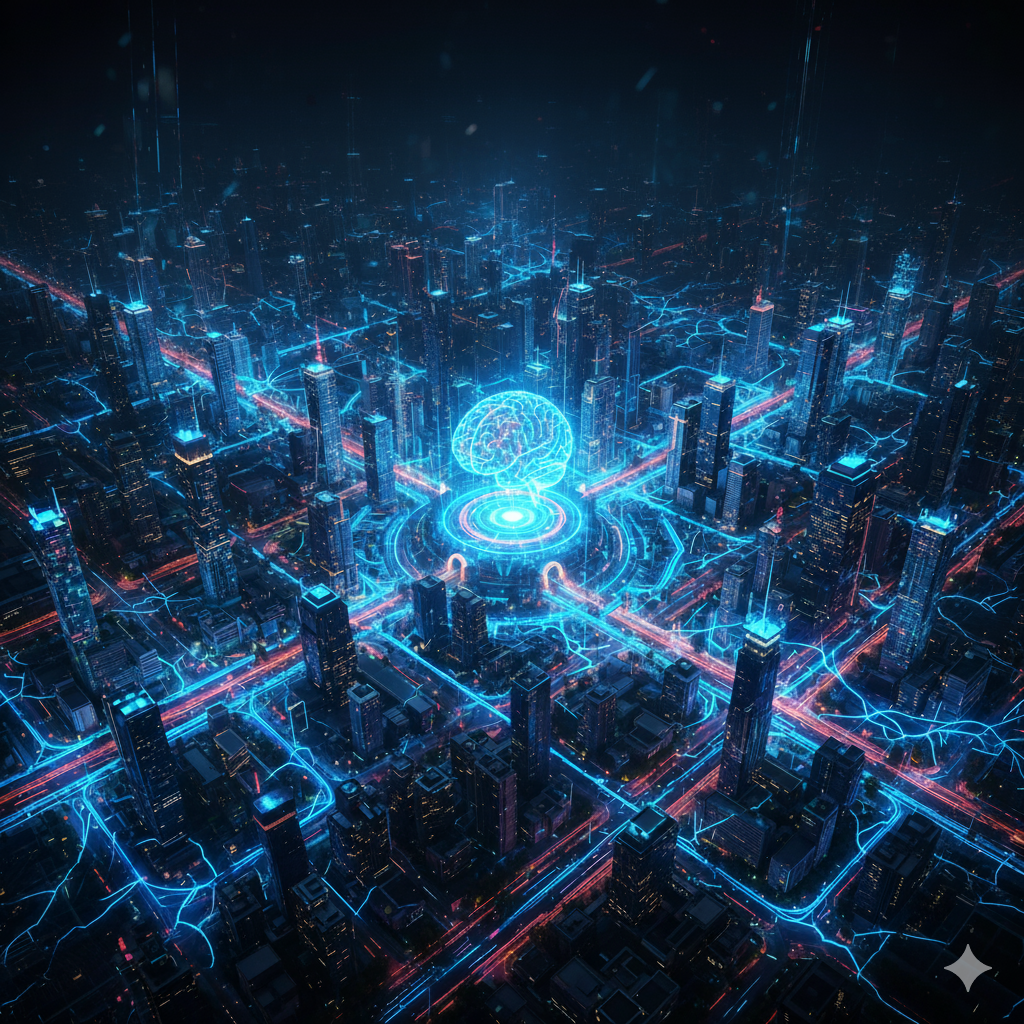
The digital nervous system represents more than technological innovation – it embodies a fundamental reimagining of how cities function, learn, and evolve. India’s Smart Cities Mission pioneering implementation demonstrates that infrastructure need no longer be passive assets but active, intelligent organisms continuously sensing, processing, and optimizing.
Critical challenges remain: cybersecurity vulnerabilities, privacy concerns, interoperability gaps, incomplete policy frameworks, and digital divides that could exclude vulnerable populations from smart city benefits. Success requires holistic approaches combining technical excellence, regulatory clarity, capacity building, inclusive design, and stakeholder collaboration.
The digital nervous system isn’t a futuristic concept but a present necessity for India’s development trajectory. With 94% of Smart Cities projects completed and all 100 cities operating ICCCs, India has built the foundation. The challenge now lies in optimizing utilization, addressing security and privacy concerns, and extending benefits equitably across all urban populations.
The vision of “intelligence without limits for an always-on world” becomes achievable through sustained commitment to digital transformation, evidence-based implementation informed by rigorous evaluation, and human-centered design ensuring technology serves citizens rather than constraining them.
India’s demographic advantage, digital infrastructure foundation including world-leading platforms like UPI and Aadhaar, and thriving innovation ecosystem position it uniquely to become a global leader in smart infrastructure solutions. The digital nervous system you’ve explored today isn’t just transforming Indian cities – it’s creating a blueprint for sustainable, resilient, intelligent urban living that the world will study and emulate.
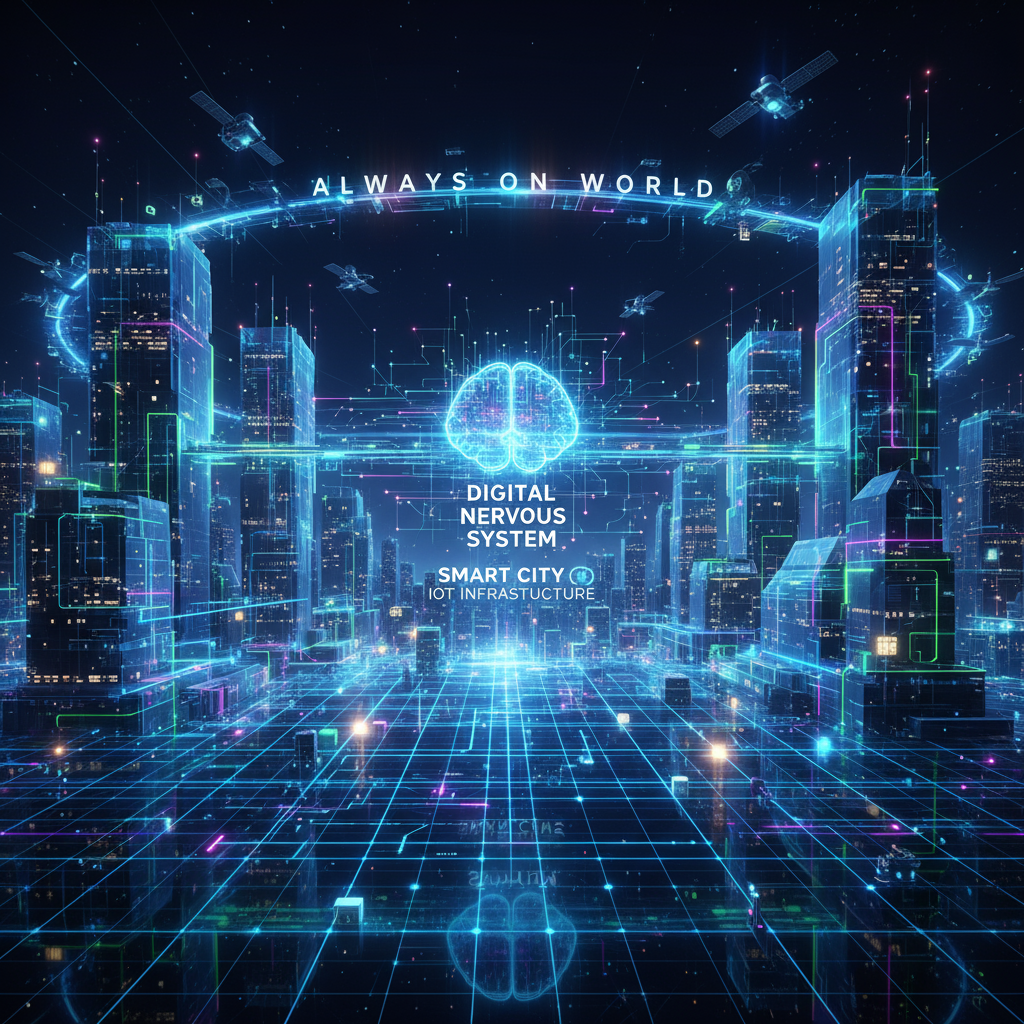





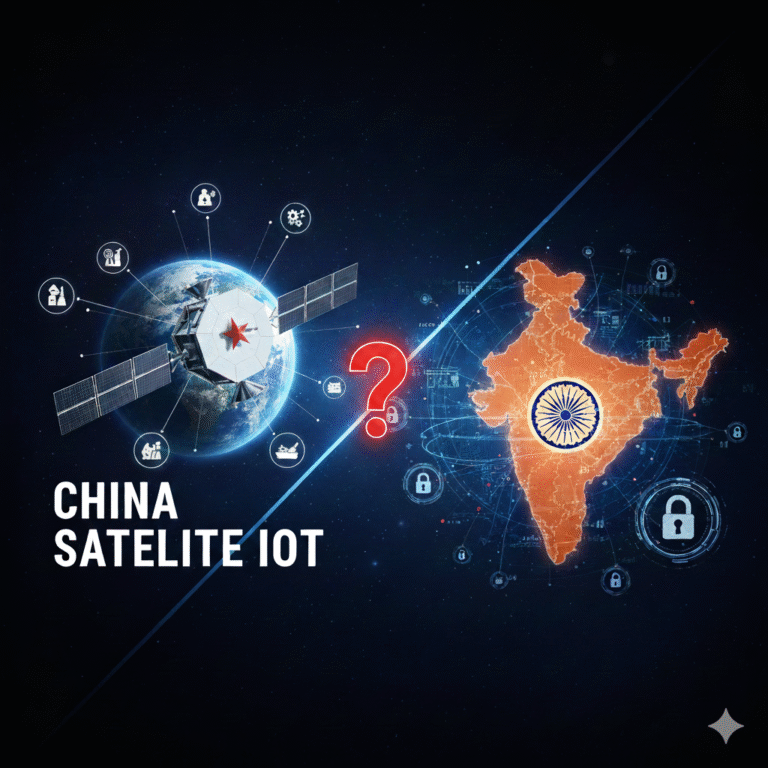
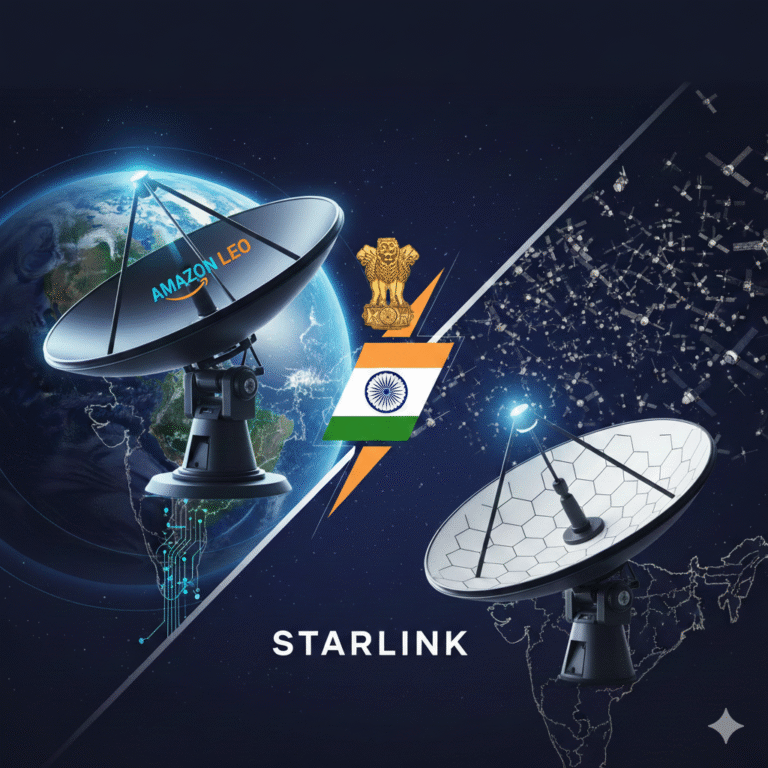

+ There are no comments
Add yours